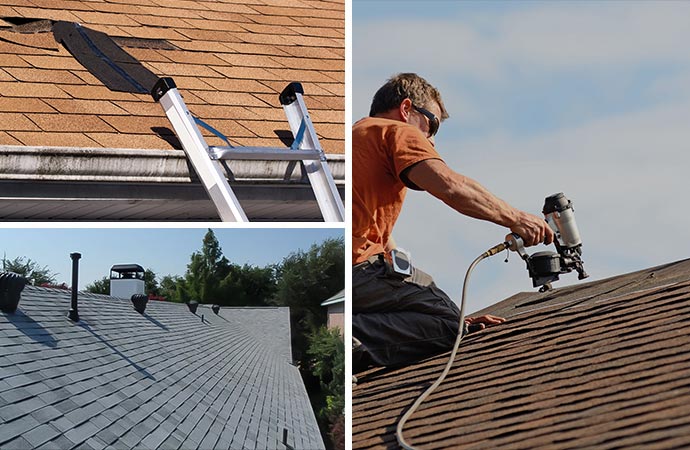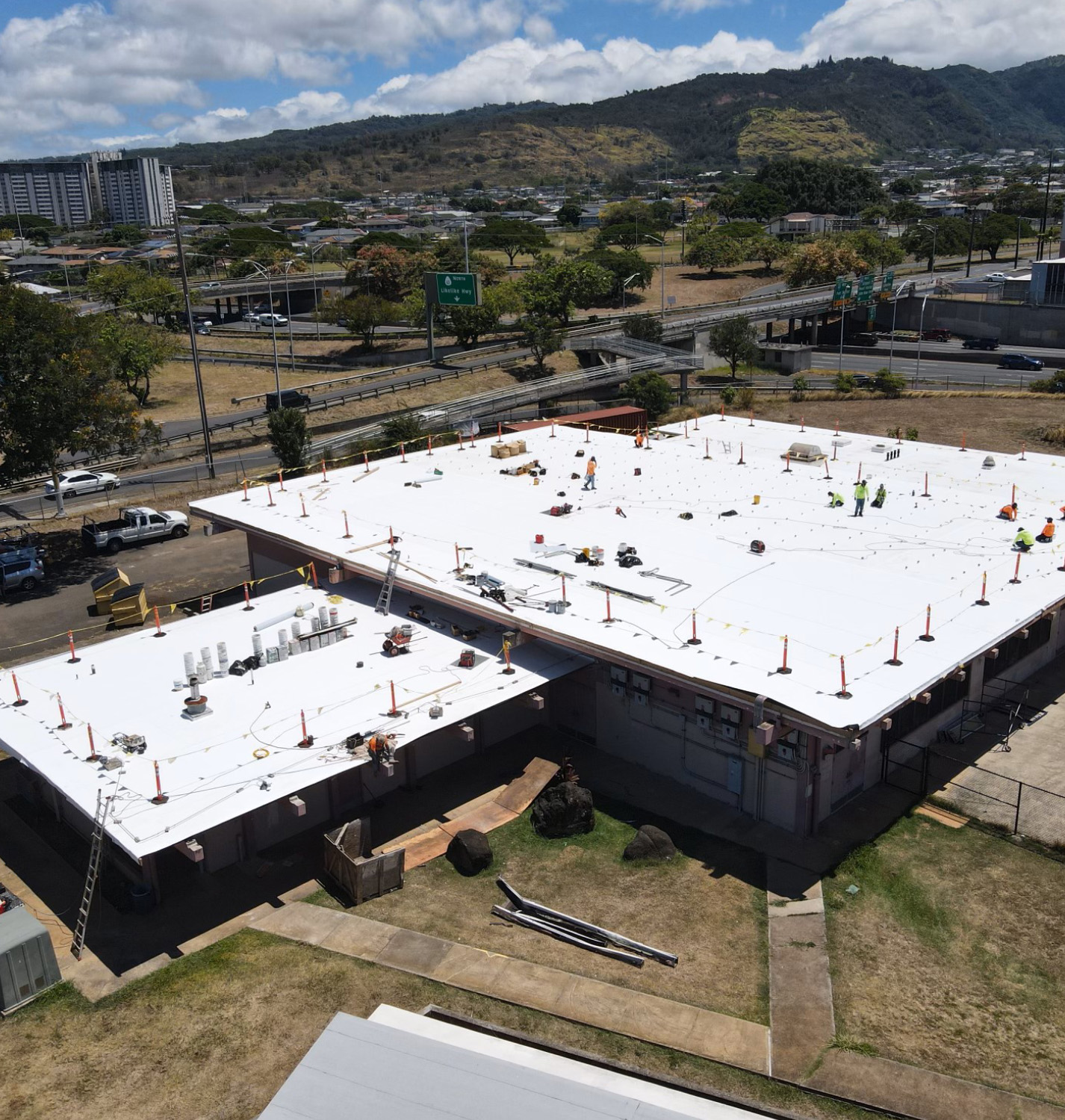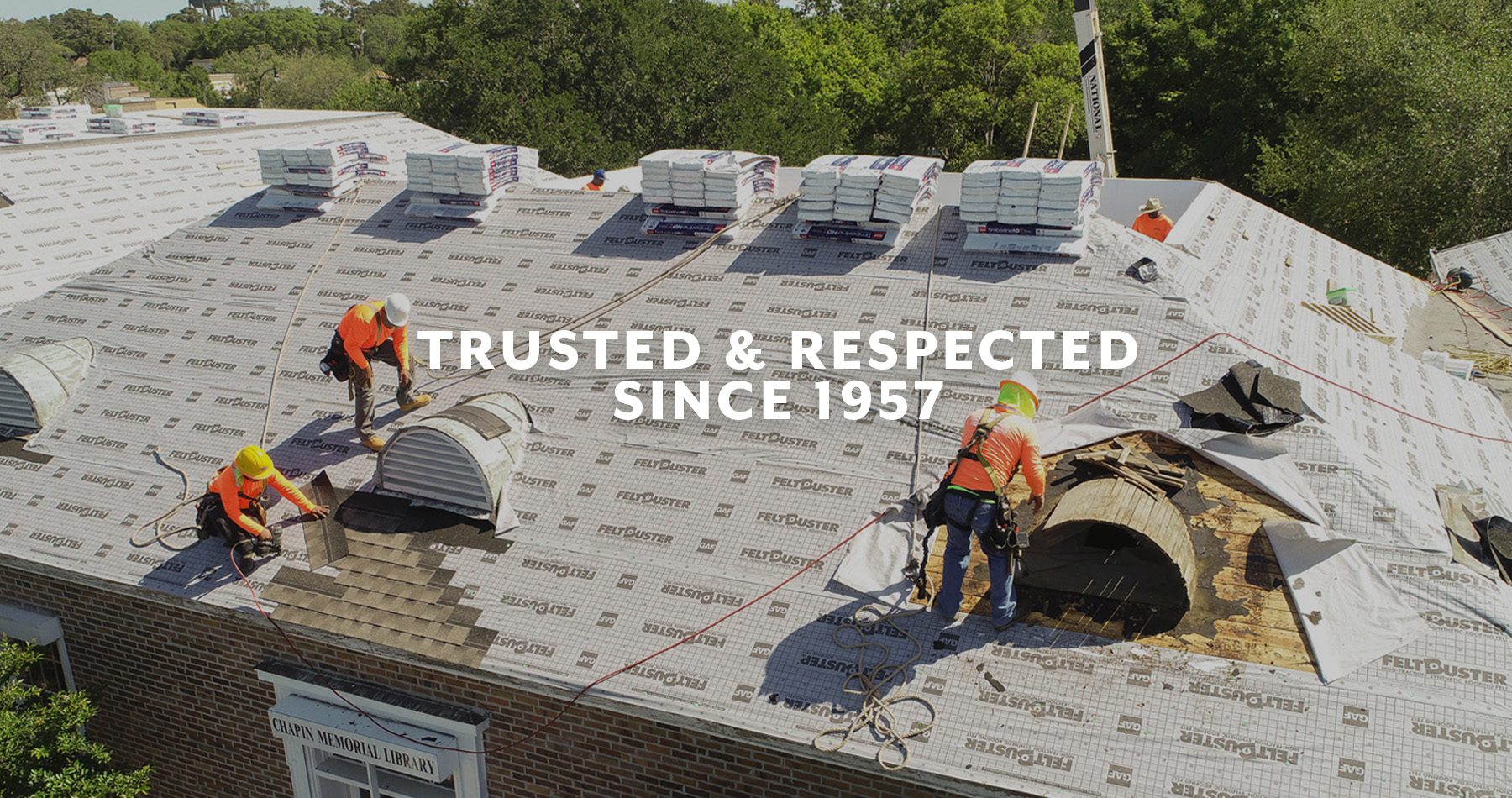Reveal Typical Roofing Troubles and Exactly How to Address Them Properly
When it comes to your roof, identifying troubles early can save you time and money. What specific actions should you take to guarantee your roofing system continues to be in top problem?
Identifying Roofing Leakages and Their Causes

Following, examine your roof covering from the outside. Look for missing out on or broken floor tiles, rusted flashing, or harmed seamless gutters.
Throughout hefty rain, observe your roof covering for any type of merging water or drips. This can reveal leaks that might not be noticeable during completely dry conditions. By staying vigilant and regularly examining your roof covering, you can catch leakages early and shield your home from additional damage.
Dealing With Missing or Harmed Tiles
When you see missing out on or harmed shingles, it's vital to act promptly to stop additional concerns. You'll want to identify the degree of the damage, fix any kind of missing out on shingles, and think about preventive upkeep pointers to maintain your roof in leading shape. Taking these steps can conserve you money and time in the future.
Recognizing Roof Shingles Damage
Although shingles are made to stand up to the aspects, they can still experience damage over time, leading to possible leaks and pricey repair services. To determine shingle damages, start by evaluating your roof covering for missing out on, broken, or crinkled roof shingles. Regularly monitoring your roof covering, specifically after severe climate, can aid you capture problems early and keep the stability of your home.
Fixing Missing Shingles
After spotting shingle damage, the following action is dealing with any missing out on or damaged tiles without delay to stop additional problems. If you can, climb onto your roof securely, using suitable equipment. Taking activity quickly will aid preserve your roof's honesty and prolong its life expectancy.
Preventive Upkeep Tips
Exactly how can you keep your roofing in top shape and stop tiles from going missing or getting harmed? Routine evaluations are key. Inspect your roofing system a minimum of twice a year and after extreme climate. Try to find indications of wear, such as curling, cracking, or loose roof shingles.
Keep rain gutters clean and totally free of particles to ensure correct water circulation and prevent shingle damages. Cut looming branches to minimize the risk of them scraping versus your roofing during tornados.
Take into consideration applying a protective sealant to prolong your shingles' life-span. Finally, if you observe any kind of problems, resolve them promptly to prevent expensive fixings later on. Taking these preventive measures can conserve you money and time while ensuring your roofing continues to be sturdy and reputable.
Comprehending Roofing System Ventilation Issues
Appropriate roofing system air flow is vital for preserving the durability and effectiveness of your roof, as it assists regulate temperature and moisture degrees in your attic. Without appropriate air flow, you could deal with concerns like extreme warm build-up, bring about early tile deterioration, or enhanced moisture that can trigger mold growth and timber rot.
To evaluate your roof ventilation, look for indications of getting too hot, such as warped roof shingles or a warm attic room. Seek obstructed vents, which can restrict airflow and trap heat. You ought to ensure your consumption and exhaust vents are balanced, enabling for appropriate air exchange.
If you suspect ventilation issues, consider mounting added vents or upgrading existing ones. Ridge vents, soffit vents, and gable vents can all boost air flow. Dealing with these problems without delay can secure your roof covering and save you from pricey repair work down the line. Stay aggressive in keeping your roofing system's ventilation to shield your home.
Resolving Roof Covering Moss and Algae Development
While you might appreciate the natural look of moss and algae on your roofing system, these organisms can lead to considerable issues if left uncontrolled. Use a soft-bristle brush to carefully scrub away the moss and algae, being cautious not to damage your roof shingles.
Following, think about applying a specialized roof covering cleaner or a mixture of water and bleach to eliminate remaining spores. Normal inspections and upkeep will aid prevent moss and algae from returning, guaranteeing your roofing system stays in great shape for years to come.
Repairing Storm Damages and Wind Issues
After a tornado, it's crucial to examine your roofing system for damage triggered by high winds and heavy rainfall. Beginning by inspecting for missing or damaged shingles, as these prevail casualties. If you see any, it is essential to change them promptly to stop leakages. Next roofing honolulu hi off, inspect the blinking around smokeshafts and vents; damaged flashing can bring about water penetration.
Try to find any type of drooping areas, which may suggest water build-up or structural concerns. If you find any debris, like branches or leaves, remove them meticulously to avoid additional damages. If your gutters are obstructed, clear them to ensure appropriate drain.

For tiny fixings, you might manage it on your own, however don't wait to call a professional for substantial damage. Bear in mind, acting swiftly can save you from larger issues down the line, so take that analysis seriously and deal with any concerns immediately.
Identifying Indicators of Architectural Damage
Just how can you inform if your roof covering is suffering from architectural damages? Next off, check for splits or voids in the walls or ceiling, as these can signal shifting or clearing up due to roofing concerns. If you notice missing or broken shingles, it's vital to resolve them promptly, as they can expose your roofing to further damages.
Routine Maintenance Tips for Durability

Normal Assessments Value
Since a roofing is your home's first line of protection against the aspects, routine evaluations are essential for maintaining its honesty (roofing materials hawaii). You ought to inspect your roofing a minimum of twice a year, ideally in springtime and fall, to capture possible concerns early. Look for missing out on or damaged tiles, indications of leakages, and any kind of debris that could create issues. Pay close focus to locations around smokeshafts, vents, and blinking, as these prevail vulnerable points. If you observe anything unusual, do not hesitate to get in touch with a specialist for a comprehensive assessment. Staying on top of these assessments can protect against costly repairs down the line and extend your roof covering's life-span, ensuring your home remains secure for many years ahead.
Correct Gutter Upkeep
Routine roofing assessments naturally lead to the significance of appropriate seamless gutter upkeep. Examine your rain gutters for leaks or corrosion; they can trigger water damages to your roofing and home. By following these suggestions, you'll expand your gutters' life expectancy and shield your roof covering.
Often Asked Concerns
Exactly How Can I Select the Right Roof Covering Material for My Home?
To choose the best roofing product for your home, consider climate, longevity, and aesthetic appeals. Research study choices like asphalt tiles, steel, or floor tile. Consider upkeep requirements and budget to find what fits you ideal.
What Are the Indications I Need a Roofing System Replacement As Opposed To Fixing?
If you observe extensive leaks, sagging, or missing out on tiles, you might need a roof covering substitute. Also, if your roof's nearing its life-span or has considerable damages, it's time to contemplate a full substitute as opposed to just repair services.
How Typically Should I Set Up Specialist Roof Evaluations?
You must set up professional roof examinations at the very least yearly, ideally in spring or loss. This helps catch prospective concerns early, guaranteeing your roof stays in excellent condition and prolonging its life-span.
Can I Set Up a New Roofing Over My Old One?
You can set up a new roof over your old one, yet it's essential to inspect neighborhood building regulations and guarantee the existing roofing's problem is audio. This strategy can save money and time, yet consider potential issues.
What Is the Typical Life Expectancy of Different Roof Materials?
The average life-span differs by product: asphalt roof shingles last 15-30 years, steel roof coverings can last 40-70 years, while tile or slate roof coverings might surpass 50 years. Pick carefully based upon your climate and spending plan.
Conclusion
By staying vigilant and attending to common roof troubles quickly, you can shield your home and prolong your roof covering's lifespan. With a little regular upkeep, you'll not just safeguard your investment yet also take pleasure in peace of mind understanding your roof covering is in top form.